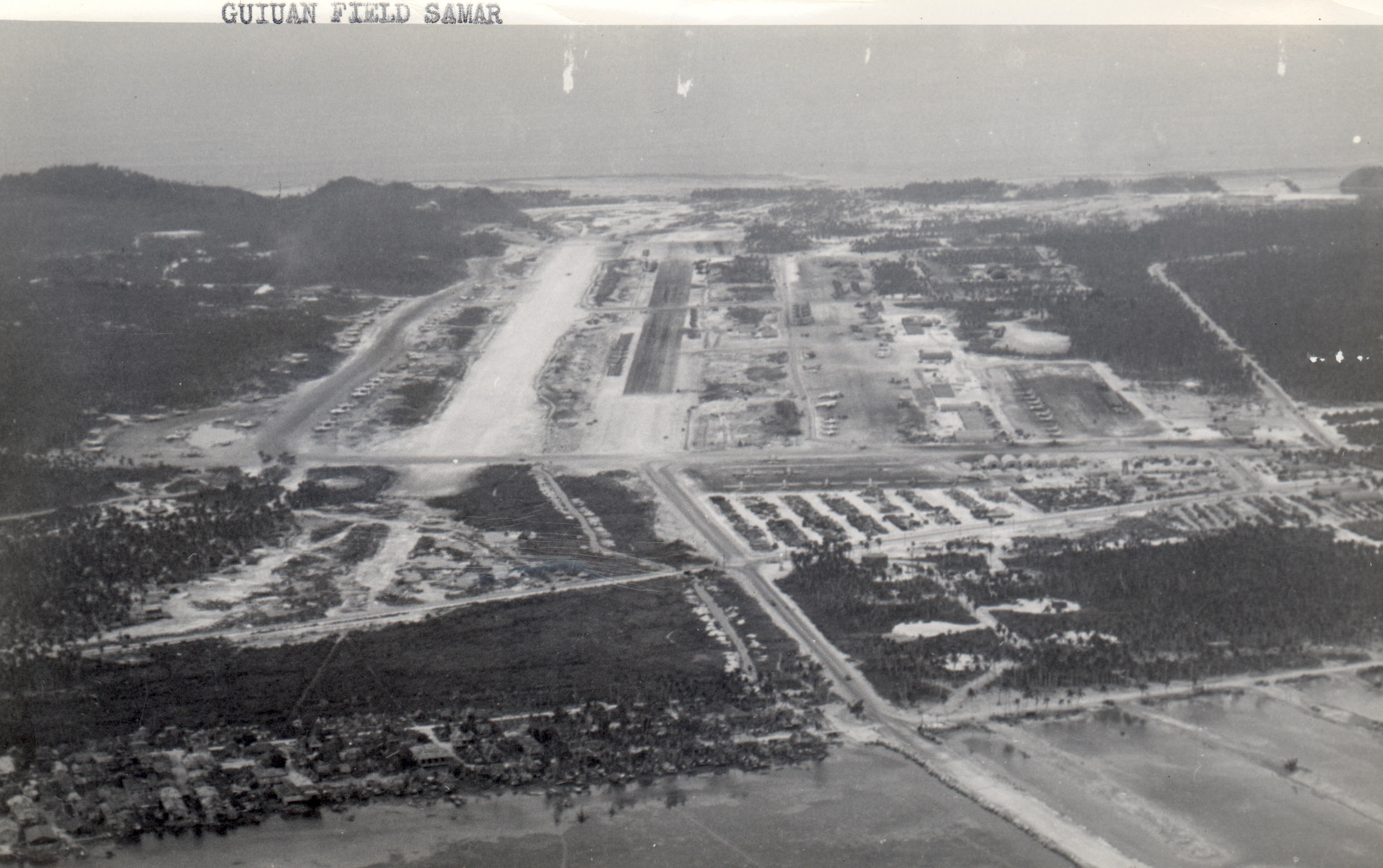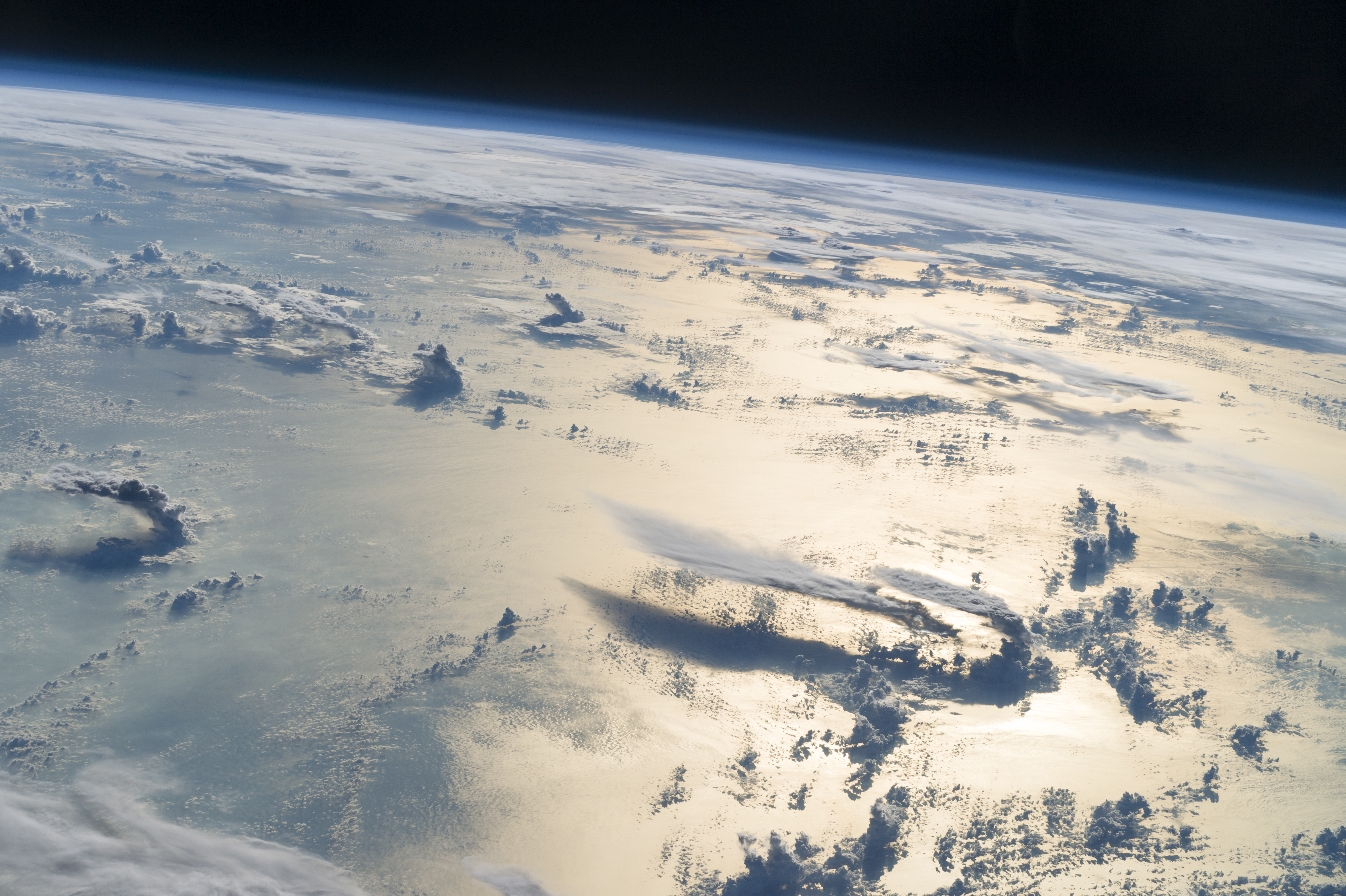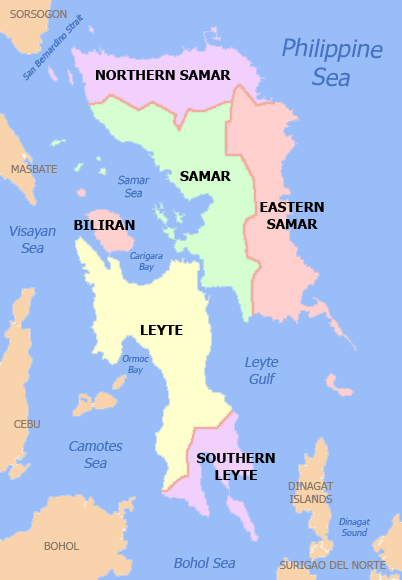|
Calicoan
Calicoan is an island east of Leyte Gulf, off the southeastern point of Samar in the Philippines. It is one of the islands that are part of the municipality of Guiuan, Eastern Samar, Guiuan, in the Provinces of the Philippines, province of Eastern Samar. The island can be reached from Tacloban by a three-hour bus ride. It is dubbed as the Surfing Capital of the Visayas. Geography Calicoan Island has white sand beaches with rocky bottoms. In the middle of the island are six lagoons ringed by forest, the largest being in size. At the cliff side margin of Calicoan's forests are dozens of caves, includinLinao Cave On the northern tip of Calicoan are wetlands inhabited by fish, shrimp, and crabs. The surrounding waters support several marine-based industries such as fish farming, seaweed farming, and pearl farming. Calicoan holds a strategic location as it is situated between Guiuan and Sulangan in Eastern Samar, making it a natural stopping point for travelers moving between thes ... [...More Info...] [...Related Items...] OR: [Wikipedia] [Google] [Baidu] |
Guiuan, Eastern Samar
Guiuan (Help:IPA/Tagalog, [ˈgiˌwan] ; , ), officially the Municipality of Guiuan, is a municipality of the Philippines, municipality in the Philippine Province, province of Eastern Samar, Philippines. It constitutes the southeastern extremity of Samar, Samar Island and some adjacent islands, surrounded by Leyte Gulf and the Philippine Sea (which a marginal sea of the Pacific Ocean), two major bodies of water that makes the town the surfing capital of the Visayas. According to the 2020 census, it has a population of 53,361 people, making it the most populous municipality in Eastern Samar (followed by Dolores, Eastern Samar, Dolores) and the second most populous administrative division in the entire province after the capital city Borongan. Guiuan played a significant part in Philippine history. Historical accounts attested that Ferdinand Magellan's 16th century Magellan expedition, expedition first landed on the island of Homonhon, which lies within the municipality, after their ... [...More Info...] [...Related Items...] OR: [Wikipedia] [Google] [Baidu] |
Guiuan
Guiuan ( �giˌwan; , ), officially the Municipality of Guiuan, is a municipality in the province of Eastern Samar, Philippines. It constitutes the southeastern extremity of Samar Island and some adjacent islands, surrounded by Leyte Gulf and the Philippine Sea (which a marginal sea of the Pacific Ocean), two major bodies of water that makes the town the surfing capital of the Visayas. According to the 2020 census, it has a population of 53,361 people, making it the most populous municipality in Eastern Samar (followed by Dolores) and the second most populous administrative division in the entire province after the capital city Borongan. Guiuan played a significant part in Philippine history. Historical accounts attested that Ferdinand Magellan's 16th century expedition first landed on the island of Homonhon, which lies within the municipality, after their Pacific crossing. The Immaculate Conception Parish Church in the Guiuan '' poblacion'' was established in the 18th ... [...More Info...] [...Related Items...] OR: [Wikipedia] [Google] [Baidu] |
Sulangan
Guiuan ( �giˌwan; , ), officially the Municipality of Guiuan, is a municipality in the province of Eastern Samar, Philippines. It constitutes the southeastern extremity of Samar Island and some adjacent islands, surrounded by Leyte Gulf and the Philippine Sea (which a marginal sea of the Pacific Ocean), two major bodies of water that makes the town the surfing capital of the Visayas. According to the 2020 census, it has a population of 53,361 people, making it the most populous municipality in Eastern Samar (followed by Dolores) and the second most populous administrative division in the entire province after the capital city Borongan. Guiuan played a significant part in Philippine history. Historical accounts attested that Ferdinand Magellan's 16th century expedition first landed on the island of Homonhon, which lies within the municipality, after their Pacific crossing. The Immaculate Conception Parish Church in the Guiuan ''poblacion'' was established in the 18th century ... [...More Info...] [...Related Items...] OR: [Wikipedia] [Google] [Baidu] |
Eastern Samar
Eastern Samar ( Waray-Waray: ''Sinirangan Samar''; ), officially the Province of Eastern Samar, is a province in the Philippines located in the Eastern Visayas region. Its capital is the city of Borongan, which is the most populous. Eastern Samar occupies the eastern portion of the island of Samar. Bordering the province to the north is the province of Northern Samar and to the west is Samar province. To the east lies the Philippine Sea, part of the vast Pacific Ocean, while to the south lies Leyte Gulf. History Spanish colonial era During his circumnavigation of the globe, Ferdinand Magellan had set foot on the tiny island of Homonhon in the southern part of the province. On March 16, 1521, the area of what is now Eastern Samar is said to be the first Philippine landmass spotted by Magellan and his crew. In 1596, many names, such as Samal, Ibabao, and Tandaya, were given to Samar Island prior to the coming of the Spaniards in 1596. During the early days of Spanish occu ... [...More Info...] [...Related Items...] OR: [Wikipedia] [Google] [Baidu] |
Typhoon Haiyan
Typhoon Haiyan, known in the Philippines as Super Typhoon Yolanda, was an extremely powerful and catastrophic tropical cyclone that is among List of the most intense tropical cyclones, the most powerful tropical cyclones ever recorded. Upon making landfall, Haiyan devastated portions of Southeast Asia, particularly the Philippines during early November 2013. It is one of Typhoons in the Philippines, the deadliest typhoons on record in the Philippines, killing at least 6,300 people in the region of Visayas alone. In terms of JTWC-estimated 1-minute sustained winds, Haiyan is tied with Typhoon Meranti, Meranti in 2016 Pacific typhoon season, 2016 for being the second strongest landfall (meteorology), landfalling tropical cyclone on record, only behind Typhoon Goni, Goni of 2020 Pacific typhoon season, 2020. It was also the most intense tropical cyclone Tropical cyclones in 2013, worldwide in 2013. The 30th named storm, thirteenth typhoon, and fifth super typhoon of the 2013 Pa ... [...More Info...] [...Related Items...] OR: [Wikipedia] [Google] [Baidu] |
Leyte Gulf
Leyte Gulf, also known simply as the Leyte, is a gulf in the Eastern Visayan region in the Philippines. The bay is part of the Philippine Sea of the Pacific Ocean, and is bounded by two islands; Samar in the north and Leyte in the west. On the south of the bay is Mindanao Island, separated from Leyte by the Surigao Strait. Dinagat Island partly encloses the gulf to the southeast, and the small Homonhon Island and Suluan Island, sit astride the eastern entrance to the Gulf. It is approximately north-south, and east-west. Several municipalities are situated on the coast of the gulf: Balangiga, Giporlos, Guiuan, Lawaan, Mercedes, Quinapondan and Salcedo. There are also eleven marine reserves in the gulf region. Leyte Gulf was also the scene of the Battle of Leyte Gulf, which extends to Surigao Strait during the Battle of Surigao Strait, the largest naval battle of World War II and started the end of Japanese occupation in the Philippines. During World War II the gul ... [...More Info...] [...Related Items...] OR: [Wikipedia] [Google] [Baidu] |
Philippine Sea
The Philippine Sea is a List of seas#Marginal seas by ocean, marginal sea of the Pacific Ocean, Western Pacific Ocean east of the list of islands of the Philippines, Philippine Archipelago (hence the name) and the List of seas#Largest seas by area, largest sea in the world, occupying an estimated surface area of . The Philippine Sea Plate forms the floor of the sea. Its western border is the first island chain to the west, comprising the Ryukyu Islands in the northwest and Taiwan in the west. Its southwestern border comprises the Philippines, Philippine islands of Luzon, Catanduanes, Samar, Leyte, and Mindanao. Its northern border comprises the Japanese islands of Honshu, Shikoku and Kyūshū. Its eastern border is the second island chain to the east, comprising the Bonin Islands and Iwo Jima in the northeast, the Mariana Islands (including Guam, Saipan, and Tinian) in the due east, and Halmahera, Palau, Yap and Ulithi (of the Caroline Islands) in the southeast. Its southern ... [...More Info...] [...Related Items...] OR: [Wikipedia] [Google] [Baidu] |
Philippines
The Philippines, officially the Republic of the Philippines, is an Archipelagic state, archipelagic country in Southeast Asia. Located in the western Pacific Ocean, it consists of List of islands of the Philippines, 7,641 islands, with a total area of roughly 300,000 square kilometers, which are broadly categorized in Island groups of the Philippines, three main geographical divisions from north to south: Luzon, Visayas, and Mindanao. With a population of over 110 million, it is the world's List of countries and dependencies by population, twelfth-most-populous country. The Philippines is bounded by the South China Sea to the west, the Philippine Sea to the east, and the Celebes Sea to the south. It shares maritime borders with Taiwan to the north, Japan to the northeast, Palau to the east and southeast, Indonesia to the south, Malaysia to the southwest, Vietnam to the west, and China to the northwest. It has Ethnic groups in the Philippines, diverse ethnicities and Culture o ... [...More Info...] [...Related Items...] OR: [Wikipedia] [Google] [Baidu] |
Eastern Visayas
Eastern Visayas (; ; ; ) is an administrative region in the Philippines, designated as Region VIII. It consists of three main islands: Samar, Leyte, and Biliran. The region has six provinces: Biliran, Leyte, Northern Samar, Samar, Eastern Samar, Southern Leyte, one independent city, Ormoc, and one highly urbanized city, Tacloban (its regional center and largest city). The highly urbanized city of Tacloban is the sole regional center. These provinces and cities occupy the easternmost islands of the Visayas group of islands, hence the region's name. Some historians believe that the oldest ancient kingdom in the Philippines is found in this region, the Lakanate of Lawan, which plays a significant role in the Polynesian and Austronesian intermigration. Eastern Visayas faces the Philippine Sea to the east. The region's most famous landmark is the San Juanico Bridge, which links the islands of Samar and Leyte. As of 2020, the Eastern Visayas region has a population o ... [...More Info...] [...Related Items...] OR: [Wikipedia] [Google] [Baidu] |
Samar
Samar ( ) is the third-largest and seventh-most populous island in the Philippines, with a total population of 1,909,537 as of the 2020 census. It is located in the eastern Visayas, which are in the central Philippines. The island is divided into three provinces: Samar (formerly Western Samar), Northern Samar, and Eastern Samar. These three provinces, along with the provinces on the nearby islands of Leyte and Biliran, are part of the Eastern Visayas region. About a third of the island of Samar is protected as a natural park, known as the Samar Island Natural Park. Many names, such as ''Samal'', ''Ibabao'', and ''Tandaya'', were given to the island prior to the arrival of the Spaniards in 1596. During the early days of Spanish occupation, Samar was under the jurisdiction of Cebu. It later became part of Leyte in 1735 until its separation to become a distinct province named Samar in 1768. On June 19, 1965, through Republic Act No. 4221, Samar was divided into three provi ... [...More Info...] [...Related Items...] OR: [Wikipedia] [Google] [Baidu] |
Provinces Of The Philippines
In the Philippines, provinces ( or ) are one of its primary political and administrative divisions of the Philippines, administrative divisions. There are 82 provinces at present, which are further subdivided into Cities of the Philippines, component cities and Municipalities of the Philippines, municipalities. The local government units in the Metro Manila, National Capital Region, as well as Cities of the Philippines#Independent cities, independent cities, are independent of any provincial government. Each province is governed by an elected legislature called the Sangguniang Panlalawigan and an elected governor. The provinces are grouped into Regions of the Philippines, eighteen regions based on geographical, cultural, and ethnological characteristics. Thirteen of these regions are numerically designated from north to south, while the National Capital Region, the Cordillera Administrative Region, the Southwestern Tagalog Region (Mimaropa), the Negros Island Region, and the Ba ... [...More Info...] [...Related Items...] OR: [Wikipedia] [Google] [Baidu] |
Tacloban
Tacloban ( ; ), officially the City of Tacloban (; ), is a Cities of the Philippines#Legal classification, highly urbanized city on Leyte island in the Eastern Visayas region of the Philippines. According to the 2020 census, Tacloban has a population of 251,881, making it the most populous city in the Eastern Visayas. The city is located southeast of Manila. Tacloban is the regional center of the Eastern Visayas region. It is also the largest city and capital of the province of Leyte (province), Leyte, wherein it is geographically situated and grouped under the province by the Philippine Statistics Authority, but the city is governed and administered independently from it. Tacloban City was briefly the capital of the Philippines under the Commonwealth Government, from October 20, 1944, to February 27, 1945. In an extensive survey conducted by the Asian Institute of Management Policy Center and released in July 2010, Tacloban City ranks as the fifth most competitive city in the ... [...More Info...] [...Related Items...] OR: [Wikipedia] [Google] [Baidu] |







